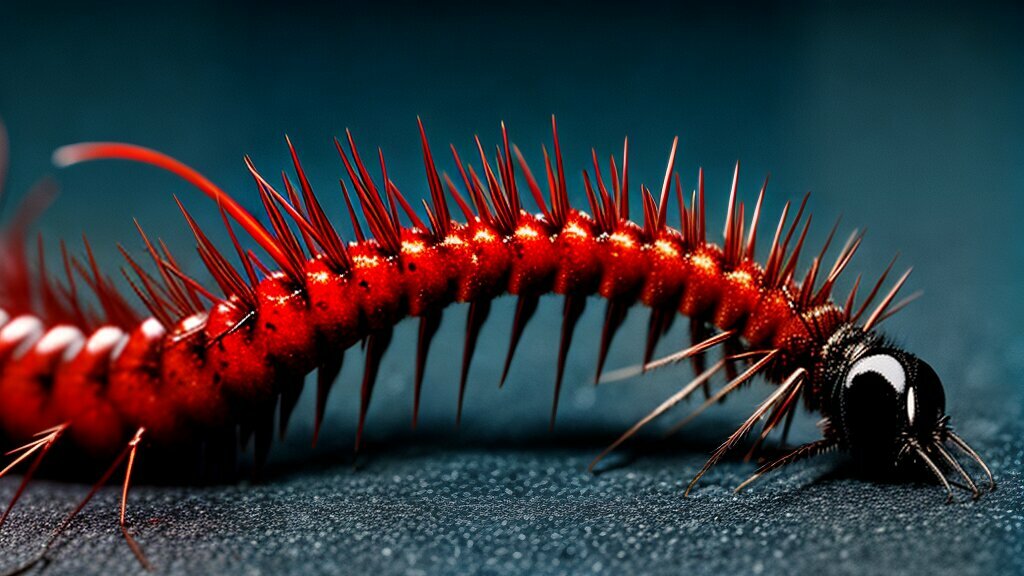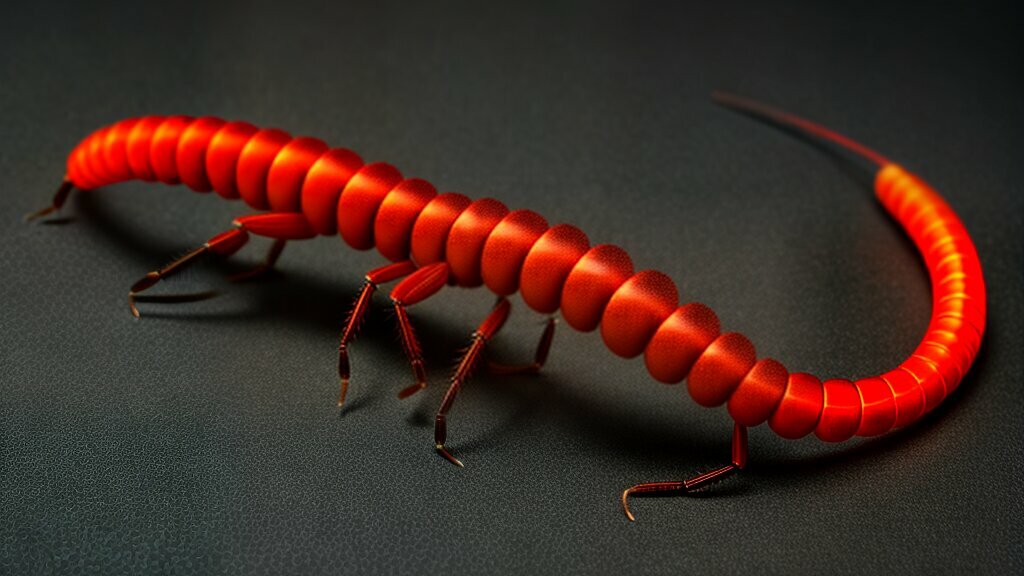Centipedes are fascinating creatures known for their lightning-fast movements and predatory nature. However, there is one behavior that has puzzled many: Why do centipedes run toward humans?
It’s a common experience – you see a centipede scurrying across the floor, and suddenly it changes course and appears to be making a beeline for you. It can be unnerving, to say the least. But what’s behind this behavior?
In this article, we’ll explore the fascinating world of centipede behavior and movement patterns, examining the possible reasons why they may approach or run toward humans. We’ll also address common misconceptions around this behavior and provide evidence-based explanations to dispel any unnecessary fear or misunderstanding.
Key Takeaways
- Centipedes are known for their speed, agility, and predatory nature.
- Many people have experienced centipedes running toward them, which can be unnerving.
- This article explores the possible reasons behind this behavior, including seeking shelter, hunting opportunities, or mistaken identification.
- We’ll also debunk common myths and misconceptions around centipede behavior, providing evidence-based explanations.
Understanding Centipede Behavior and Movement Patterns
Centipedes are fascinating creatures that can move with remarkable agility and speed. They are predatory animals that hunt a variety of small prey, including insects and spiders. Despite their long, slender bodies and numerous legs, they are surprisingly adept at maneuvering through tight spaces and complex environments.
One of the key features that sets centipedes apart from other arthropods is their ability to run. As they move, their legs undulate in a wave-like pattern, propelling them forward with remarkable speed and precision.
Centipedes use a variety of movement patterns to navigate their environment. When hunting prey, they may stalk and ambush their target, striking with lightning-fast reflexes to incapacitate their prey. They can also move quickly to escape danger, using their agility and speed to outrun predators.
In addition to running and striking, centipedes are also capable of climbing, burrowing, and swimming. They can scale vertical surfaces with ease, using their numerous appendages to grip onto rough or porous surfaces. In moist environments, they may burrow into the soil or hide beneath rocks or other cover. And in some cases, they can even swim through water, using their legs to propel themselves forward.
Overall, the behavior and movement patterns of centipedes are highly adapted to their environment. They are efficient hunters and adept predators, capable of navigating complex environments with ease. By understanding these behaviors and movement patterns, we can gain a deeper appreciation for these fascinating creatures and their place in the natural world.
The Reasons Behind Centipedes Approaching People
Centipedes are fascinating creatures that exhibit various behaviors and movement patterns. However, their tendency to run toward humans remains a mystery. While this behavior may seem alarming, there are several possible explanations for it.
One reason centipedes may approach humans is to seek shelter. These creatures prefer dark and damp environments, and human-made structures can provide ideal hiding places from predators or harsh environmental conditions. Centipedes may also be attracted to human habitats due to the presence of other insects, which they prey upon.
Another possible reason for centipedes approaching people is mistaken identification. Despite their many legs and elongated bodies, centipedes can sometimes be mistaken for other invertebrates such as millipedes or worms. In some cases, this can lead to accidental encounters with humans.
It is also important to note that centipedes can exhibit aggression, especially when threatened. While they are not typically dangerous to humans, their bites can be painful and cause mild swelling or inflammation. Therefore, it is advisable to avoid handling centipedes whenever possible.
It is worth noting that human interactions with centipedes can have both positive and negative effects on these creatures. While human activities can provide ideal habitats for centipedes, they can also disrupt their natural environments and contribute to their decline. Therefore, it is important to strive for coexistence with centipedes and other wildlife.
Understanding the reasons behind centipedes running toward humans can help alleviate unnecessary fear or misunderstanding of these fascinating creatures. By respecting their behavior and natural habitats, we can foster a harmonious relationship with these important members of our ecosystem.
Debunking the Myths: Misconceptions About Centipedes Running Toward You
Despite their scary appearance and quick movements, centipedes are not out to get you. In fact, their behavior of running toward humans is often misinterpreted and misunderstood. Let’s debunk some common myths about centipede behavior:
“Centipedes are aggressive and will attack humans.”
This is a common misconception. While centipedes are predatory and may bite if they feel threatened, they do not go out of their way to attack humans. In fact, most bites occur when humans accidentally step on or handle a centipede.
“Centipedes are attracted to human flesh.”
Centipedes are not attracted to human flesh. They are attracted to dark, damp environments, and may accidentally stumble upon a human in their search for shelter or prey.
“Centipedes are venomous and dangerous.”
While centipedes do possess venom, most species do not pose a significant threat to humans. In fact, centipedes are beneficial to have around as they help control insect populations.
By dispelling these myths and understanding the true behavior of centipedes, we can appreciate these fascinating creatures and coexist with them peacefully. Remember to handle centipedes with care and avoid provoking them, and they will likely reciprocate the same respect.
The Conclusion
In conclusion, the mystery behind why centipedes may run toward humans can be explained by understanding their behavior and movement patterns. While it may seem alarming, their approach is not necessarily aggressive and may simply be due to seeking shelter, hunting opportunities, or environmental conditions. Misconceptions about centipedes running toward humans should be dispelled, as they are often harmless and play an important role in our ecosystem.
It is essential to gain a better understanding of centipede behavior to coexist with them in our surroundings. By doing so, we can avoid unnecessary fear and misunderstandings and appreciate the unique attributes these fascinating creatures possess. With knowledge, we can foster a healthy and respectful relationship with centipedes and the natural world around us.
FAQ
Q: Why do centipedes run toward you?
A: Centipedes may exhibit a tendency to run toward humans for several reasons. This behavior can be attributed to factors such as seeking shelter, hunting opportunities, environmental conditions, or mistaken identification. The potential role of aggression and the interaction between centipedes and humans also play a part in this behavior.
Q: What are centipede behavior and movement patterns?
A: Centipedes are known for their agility, speed, and predatory nature. They exhibit various behaviors and movement patterns, which contribute to their ability to run toward humans. Understanding these patterns is crucial in unraveling the mystery behind their behavior.
Q: What are the reasons behind centipedes approaching people?
A: Centipedes may approach or run toward humans for several reasons. They may be seeking shelter, searching for prey, or responding to environmental conditions. Mistaken identification can also contribute to their behavior. It’s important to explore the potential role of aggression and understand the interaction between centipedes and humans.
Q: Are there any misconceptions about centipedes running toward humans?
A: Yes, there are common misconceptions or myths surrounding centipedes running toward humans. However, these misconceptions can be debunked with evidence-based explanations. It’s important to understand the true reasons for centipedes’ behavior, dispelling any unnecessary fear or misunderstanding.




